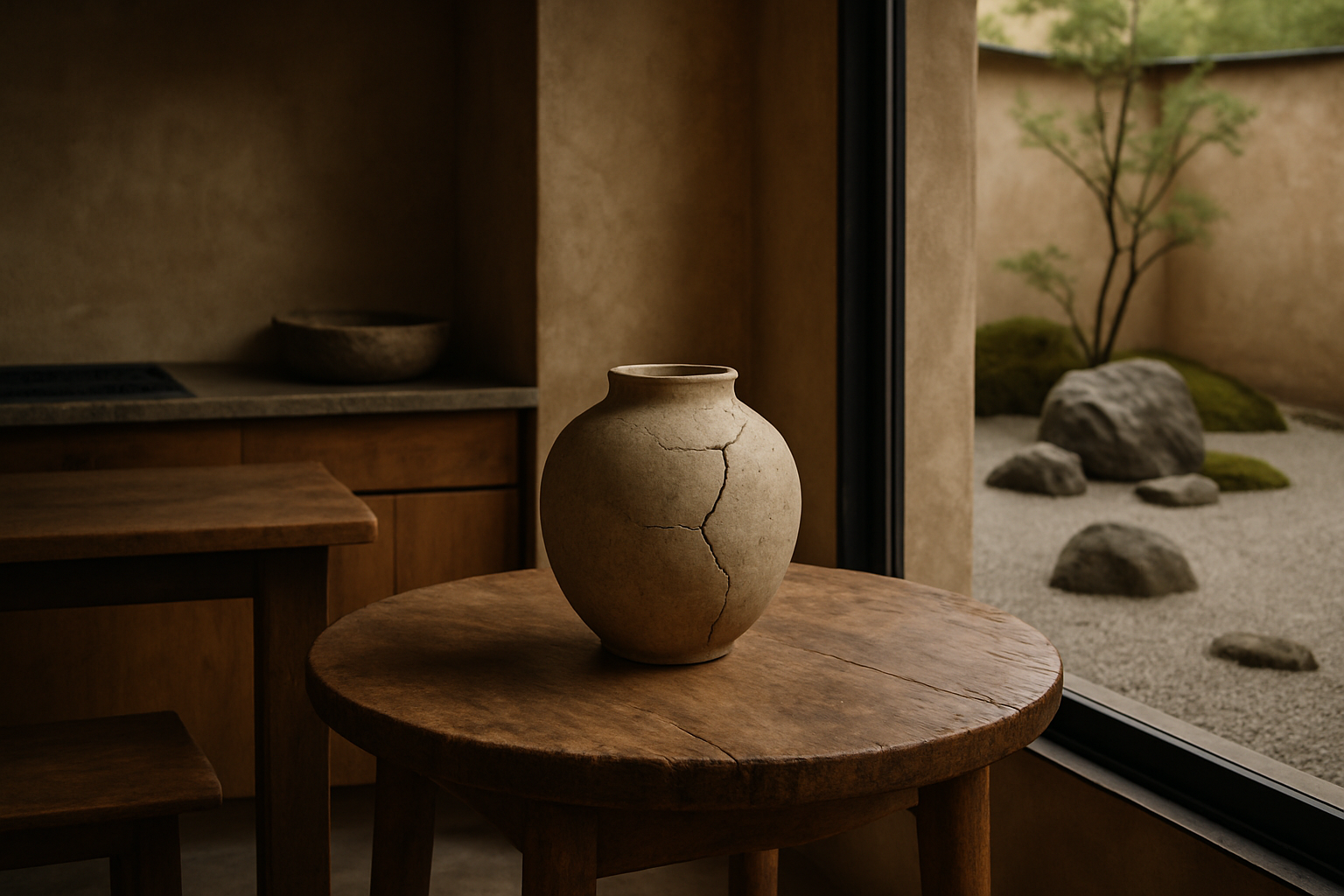Embracing Wabi-Sabi: The Art of Imperfect Beauty in Home Design
In a world obsessed with perfection, a gentle revolution is taking place in home interiors. Wabi-sabi, an ancient Japanese philosophy celebrating the beauty of imperfection, is finding its way into modern homes. This approach to design encourages us to embrace the flaws, asymmetry, and natural aging of objects, creating spaces that feel authentic, lived-in, and deeply comforting. As we explore this intriguing concept, prepare to shift your perspective on what makes a home truly beautiful.

In home design, wabi-sabi manifests as a celebration of natural materials, organic forms, and the marks of time. It’s about creating spaces that feel authentic and lived-in, rather than staged or overly polished. This philosophy encourages us to find beauty in the cracks, chips, and weathering of objects, viewing them as character-building features rather than flaws to be hidden.
Incorporating Wabi-Sabi into Your Home
Embracing wabi-sabi doesn’t mean letting your home fall into disrepair. Instead, it’s about curating a space that feels genuine and harmonious with nature. Start by incorporating natural materials like wood, stone, and clay. Choose pieces with irregular shapes or handmade qualities that showcase the maker’s touch.
Consider leaving some walls unfinished or opting for textured plaster instead of perfectly smooth surfaces. Embrace the patina of aged metals and woods, allowing them to tell a story of time and use. In the kitchen, display handmade ceramics with slight imperfections, celebrating their uniqueness rather than hiding them away.
The Color Palette of Imperfection
Wabi-sabi interiors often feature a muted, earthy color palette that reflects the natural world. Think soft greys, warm browns, and gentle greens. These colors create a soothing backdrop that allows the textures and imperfections of your decor to shine.
Avoid stark whites or bold, artificial colors. Instead, opt for natural dyes and pigments in fabrics and paints. The goal is to create a space that feels harmonious and grounded, rather than overly designed or contrived.
Cultivating a Wabi-Sabi Garden
The principles of wabi-sabi extend beautifully into outdoor spaces. In the garden, embrace the natural cycle of growth and decay. Allow plants to grow in their natural forms rather than pruning them into perfect shapes. Incorporate weathered stones, aged wood, and rustic elements that improve with time.
Consider creating a dry garden or zen garden, using raked gravel and carefully placed rocks to represent water and islands. These minimalist landscapes embody the essence of wabi-sabi, encouraging contemplation and appreciation of simplicity.
The Mindfulness of Imperfection
Perhaps the most profound aspect of wabi-sabi is its impact on our mindset. By embracing imperfection in our homes, we learn to appreciate the beauty of life’s transient nature. This philosophy encourages us to slow down, notice the small details, and find joy in the present moment.
In a world of fast fashion and disposable decor, wabi-sabi offers a refreshing alternative. It teaches us to value objects that age gracefully, to repair rather than replace, and to find beauty in the marks of time and use.
Balancing Wabi-Sabi with Modern Life
While wabi-sabi celebrates imperfection, it’s important to strike a balance with functionality and cleanliness. The goal is not to live in a state of neglect but to create a thoughtful, intentional space that feels both beautiful and livable.
Incorporate modern conveniences in ways that don’t detract from the overall aesthetic. Choose appliances with simple designs and natural finishes. Hide technology when possible, or select pieces that complement the wabi-sabi ethos.
The Future of Imperfect Design
As we move towards more sustainable and mindful ways of living, the principles of wabi-sabi are likely to gain even more relevance. This philosophy aligns perfectly with the growing interest in eco-friendly design, minimalism, and slow living.
Designers are increasingly incorporating wabi-sabi elements into contemporary spaces, creating hybrid styles that blend modern aesthetics with a appreciation for imperfection. This trend suggests a shift away from the pursuit of flawless interiors towards more authentic, personalized spaces.
Embracing the Journey
Adopting a wabi-sabi approach to home design is not about achieving a specific look, but rather about changing how we perceive beauty. It’s a journey of appreciation, mindfulness, and acceptance. As you begin to incorporate these principles into your home, you may find yourself noticing and cherishing details you once overlooked.
Remember, wabi-sabi is as much a philosophy as it is an aesthetic. It encourages us to find beauty in the everyday, to appreciate the passage of time, and to cultivate a deeper connection with our living spaces. In embracing imperfection, we open ourselves to a world of subtle, profound beauty that has been there all along, waiting to be discovered.





